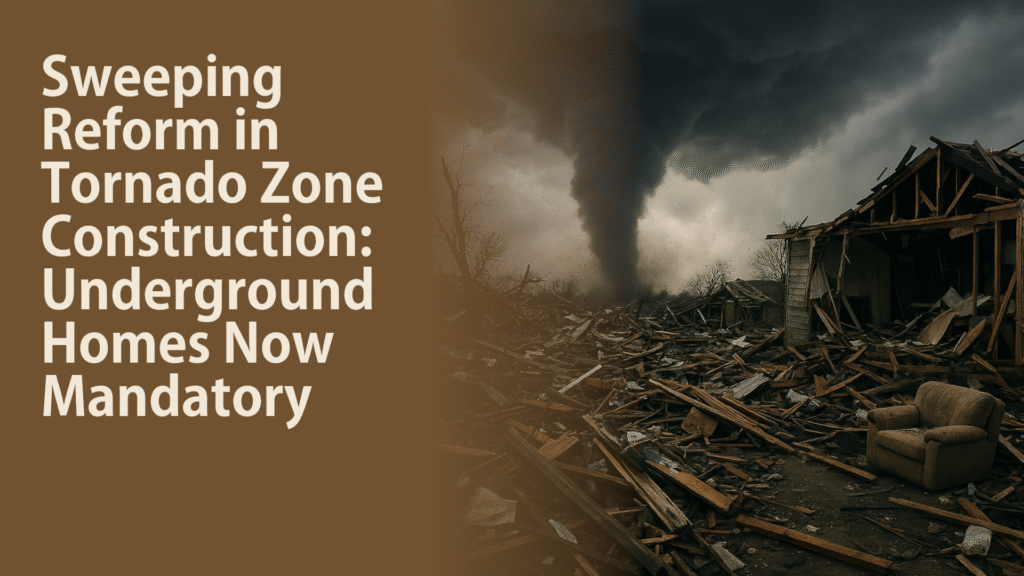
In a groundbreaking move to combat the rising cost of tornado damage and escalating insurance claims, a coalition of state governments across Tornado Alley has enacted sweeping new legislation: all new residential construction must now be built primarily underground.
The law, set to go into effect January 1, 2026, mandates that essential living spaces — including bedrooms, kitchens, bathrooms, and primary living areas — be located below ground level. Above-ground structures will be limited to non-essential spaces such as sunrooms, garages, or entry vestibules, and must meet reinforced building codes to ensure minimal debris hazards during storms.
A Shift in the Foundation of Safety
This radical change comes on the heels of record-setting tornado seasons and a dramatic spike in property destruction across states like Oklahoma, Kansas, Missouri, and parts of Texas and Nebraska. In 2024 alone, over 18,000 homes were reported destroyed or severely damaged due to severe tornado outbreaks, leading to more than $17 billion in insurance claims.
“We’ve reached a tipping point,” said Janet Holloway, Director of the National Weather Resilience Council. “The data is irrefutable — underground homes are exponentially safer in tornado conditions. This is not just a building code update; this is a public safety revolution.”
Insurance Industry on Board
Insurance companies are not only supporting the move — they’re helping drive it. As premiums soared in recent years, insurers struggled to remain solvent in high-risk areas. Several major carriers have already announced substantial discounts for policyholders who live in or plan to build underground homes.
“Residents who choose subterranean housing designs could see their annual premiums drop by up to 70%,” said Martin Ellis, spokesperson for MidNation Insurance Group. “This is the most promising alignment of safety and cost-efficiency we’ve seen in decades.”
Public Reaction and Challenges Ahead
The reaction among residents has been mixed. While many welcome the potential safety and financial benefits, others raise concerns about the cost of excavation, potential water table issues, and reduced access to natural light.
“I love the idea of being safer,” said Maria Saldana, a homeowner in Norman, Oklahoma. “But we’ll need strong incentives and assistance programs. Digging into limestone or clay isn’t cheap.”
To address these concerns, federal and state governments are introducing subsidies, low-interest construction loans, and new architectural design competitions aimed at making underground living more appealing and affordable.
Architects and Builders Rethink the American Dream
Architectural firms are already unveiling modern underground home concepts that focus on natural lighting solutions, energy efficiency, and open subterranean layouts. Some designs include skylight systems, atrium gardens, and above-ground greenhouses that double as storm shelters.
“Think less bunker, more ‘Hobbit-meets-high-tech,’” said Aisha Devine, lead architect at ShelterForm, a firm specializing in climate-adaptive homes. “This is an opportunity to redefine how we live in harmony with our environment rather than at its mercy.”
The Future Is Below
As the nation confronts increasingly severe weather events tied to climate change, the move underground may be more than a regional trend — it could signal a broader transformation in how Americans think about housing.
“Tornadoes won’t stop,” Holloway emphasized. “But we can stop building homes like they will.”